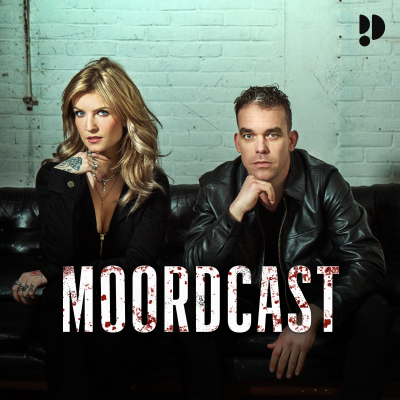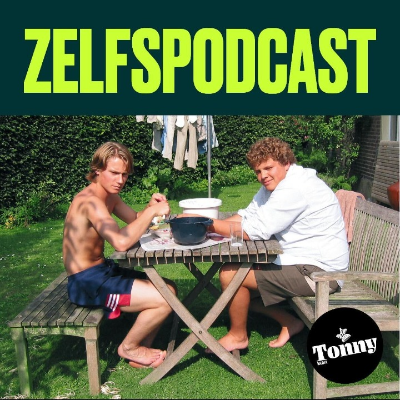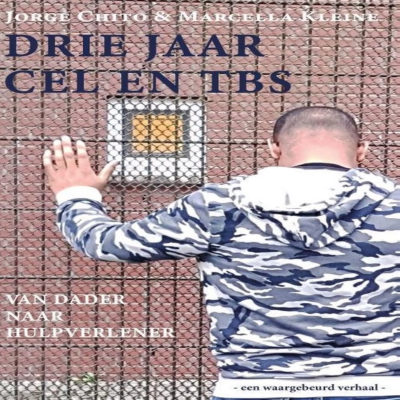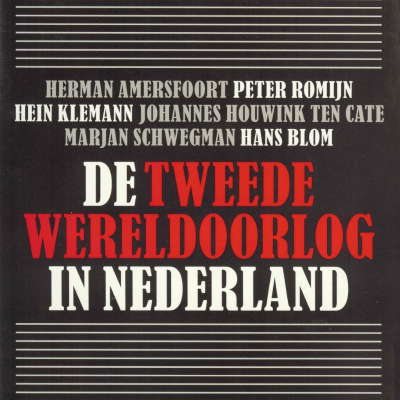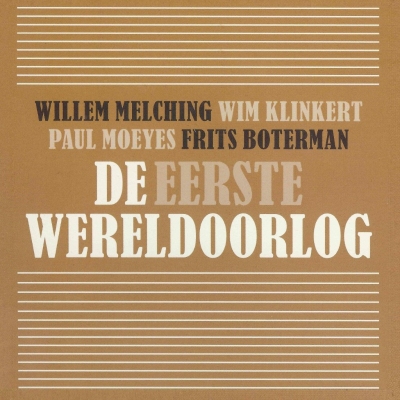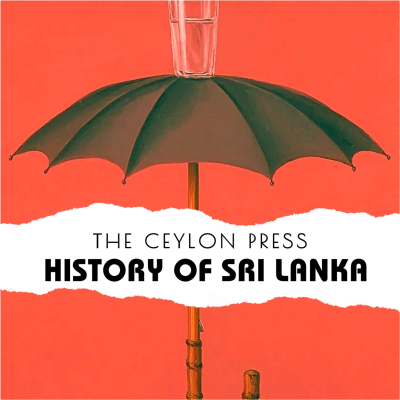
The History of Sri Lanka
Podcast door The Ceylon Press
In under a 100 pint-sized chapters, The Ceylon Press History of Sri Lanka, tellsthe story of an island renowned for a history many times larger and more byzantine than that of far bigger nations. From prehistory to the present day, each short chapter makes a little clearer the intricate sagas of its rulers, people, and progression.
Tijdelijke aanbieding
3 maanden voor € 1,00
Daarna € 9,99 / maandElk moment opzegbaar.
Alle afleveringen
12 afleveringenIt took a refugee from Nazi Germany, with an interests in economics and Buddhism to note the singular connection between two of the most obvious characteristics that distinguish Sri Lanka. “Small,” remarked E. F. Schumacher in his eponymous book in 1973, “is beautiful.” It was economics, rather than Sri Lanka that Schumacher had in mind, but, as with all seismic observations, his simple statement lent a formative new way to understand previously inexpressible truths. For Sri Lanka is both small and beautiful. So small in fact that it could fit into India 50 times; into Britain almost 4 times or even Peru almost 20 times. Its nearest neighbour, Tamil Nadu, could accommodate it twice over, with land to spare. Head a little further north and 10 times more people crowd into nearby Pakistan, or 6 more into Bangladesh. Schumacher’s only other book, published on his deathbed in 1977, “A Guide for the Perplexed”, is a study of how humans live in the world – but it could easily have lent its title to a mandatory guidebook for issue to every person who passes through Bandaranaike Airport, citizen or guest, VIP or economic migrant. For little about the island is straightforward, despite or because of its size and beauty. Confronting it for the first time is like first encountering Rubik’s Cube, that infamous multi coloured rotating brick toy whose coloured ends appear so easy to organise into blocks. The outcome, though satisfying, and apparently almost effortless, remains virtually impossible to achieve. Just below the surface of almost everything on the island, and simmering with delight, richness, chaos, or just plain thwarting befuddlement, lies the complexity of what is quite possibly the most byzantine and bewitching country in the world. The more you see, the more you wonder. Why? Why, for example, make a simple presidential election quote so convoluted and full of enough own-goal traps to risk making the spoiled votes equal to the good ones? The 2024 presidential election brought almost 40 candidates forward for a preferential style vote of such complexity that the Election Commission had to issue a two hundred word note on how to mark the ballot paper correctly. But perhaps this is to worry unnecessarily for the country’s political system has, as horse riders might note, plenty of form. By 1978, when the current constitution was adopted, it had already enjoyed 3 earlier ones, roughly one every 16 years. Now regulated by this, its second constitution since independence, Sri Lanka possesses a governing document of such elastic resilience that it has undergone an average of one major amendment every second year and has still survived. Such political robustness is nothing less than what should be expected of an island whose circuitous history meanders through over 2,500 recorded years to take in at least 12 former capital cities, as many, if not more kingdoms, and 300 recorded kings, some half of whom were estimated to have murdered the other half. Conundrums, reversals and the sudden appearance of polar partisan opposites have riotously followed almost every step of that wild journey. The kings eventually made way for the world’s first elected female head of a modern state when in July 1960 Sirimavo Bandaranaike was elected Prime Minister. Yet in 2018 a new President reimposed a four-decade-long ban on women buying alcohol. Given that barely 6% of the country’s supreme law-making body, its parliament, is filled with female MPs, this institutional sexism is understandable – but to fully explain it one needs to look little further than the fact that just under a fifth of all MPs have just one A level to their credit. But there’s much more to the rule of law than exams. Should parliament depress you, look to the country’s Supreme Court, a focused and resilient body that has thwarted attempted coups and power grabs through the decades. “Do I contradict myself?” asked the American poet, Walt Whitman. “Very well then, I contradict myself, (I am large, I contain multitudes.). And so too does Sri Lanka. Despite Nobel Prize winning scientists, Booker-prize winning writers, and architects that have profoundly reshaped how people live right across the tropical world, its best universities barely scrape into the top one thousand worldwide with a pedagogy that deliberately fails almost half its students. Honest domestic consumers eager to pay their electricity bill must first correctly guess which of 8 categories they fit into before they can pay up, proof, if ever it was needed, that here at least there is little pleasure to be had in being a consumer. Used car prices have more than doubled in the past few years, and at any one time, eggs, onions, rice, milk powder or even turmeric have entered an Alice in Wonderland world, priced well out of the reach of ordinary people. Yet still the kiribath is made. This dish, of coconut flavoured milk rice, is unique to the island, the muse behind Anuradhapura’s Kiribath Stupa, a monument of almost unimaginable antiquity that once was said to house the sacred tooth relic itself: the left Canine tooth of Gautama Buddha. The snack itself never fails to delight, a comfort food that pushes Butter Chicken, Shepherd's Pie, spaghetti or chocolate brownies to the back of any gourmet’s fridge - yet seems but a demure option in a national cuisine enriched by visitors that stayed too long - Portuguese love cakes, Dutch lamprais, Lisbon pumpkin preserve, deliciously crispy yellow deep-fried Amsterdam koekjes , Tamil dosas, idlis and vada, roast paan, Keralan hoppers, English fish cutlets, Christmas cake, brown Windsor soup or tea itself. Given the island’s history, it is no surprise that so many national resources should be devoted to the health care of its people. The remains of at least 5 ancient hospitals are found among Anuradhapura oldest ruins, and with them the tantalising Brahmi inscriptions of two physicians from the second century BCE. King after king built and enlarged the hospitals across the land and endowing them with revenue. One even built a hall for several hundred patients, each to be attended to by a slave. The third century CE king, Buddhadasa, was so committed to health that he even took to doctoring himself, curing snakes and monks alike. Today the nation’s free universal Western health care system is among the best in South Asia. Even so, patients, feeling some degree of illness, need first to self-diagnose before electing to see the correct doctor, praying all the time, as they hobble towards the hospital, that they are heading towards the right cure – a fate that eluded a recent government minister who fell ill after spectacularly drinking a ‘miracle’ COVID potion, concocted by a man who claimed to have received its recipe from Hindu goddess of destruction, Kali. Even so, it competes head-to-head with traditional medicine. In village after village, town after town, the ancient medical practices of the land, are easily accessible, endorsed by the government, with their own doctors, ministry, training, teaching and hospitals, cures and alleviate the suffering of thousands of people, daily. Nothing is really w...
Two periods of state-sponsored homicidal self-indulgence were now to grip the kingdom. The first killings broke out in 195 CE; and the second in 248 CE. Both were leavened by brief moments of stability that managed, with seconds to spare, to prevent the country from collapsing altogether; and give it a modest but life affirming breathing space. Such pirouetting on political tightropes was hardly a novelty. The Vijayans, the previous dynasty, had indulged in much the same – fuelling at least four periods of regicide covering several decades and prompting at least two civil wars over six hundred plus years of dynastic reign. To this now the Lambakannas added these two more, bringing the total number of regicide bacchanalia to at least six since Prince Vijaya had first stepped foot on the island back in 543 BCE. It is doubtful whether any other contemporary kingdom on the planet showed such record-breaking prowess. Few, if any, that came later would have dynasties that possessed such a full set of dark skills as to trump this dubious achievement. This particular lethal phase was, in retrospect, modest by the standards of what was to follow. But this is not to detract from its disruptive consequences, nor its mystery. Over a two-year period three kings were to occupy the throne in a succession swifter even than a Fred Astaire and Ginger Rogers foxtrot. On Kanittha Tissa’s death in 193 CE, his son, Cula Naga assumed power, only to be assassinated by his brother Kuda Naga in 195 CE. Kuda Naga was then despatched to the uncertain fields of reincarnation when his own brother-in-law, Siri Naga I had him killed in 195 CE. The only hint to help explain what might have promoted all this, mere family politics aside, is a famine mentioned in The Mahavamsa: “so small a quantity of food were the people reduced in that famine,” it notes, referring to the brief reign of Kuda Naga, when, it said “the king maintained without interruption a great almsgiving”. Famine is no friend of political stability and if it was the cause behind Cula Naga’s murder, the later food banks set up by his brother Kuda Naga were insufficient to calm the situation. There is nothing in terms of corroborating archaeological evidence to help us understand this dismal and murky period of national madness - though such evidence, for other periods, does exist. Stone inscriptions, for example, carry an unusually high degree of importance in Sri Lanka where the climate is preconditioned to quickly destroy any organic material used to record events. And, unlike other sources, they have better weathered the repeated theft and destruction carried out on the country by its many occupiers - be they Tamil or European. But of the four thousand stone inscriptions discovered in Sri Lanka, only one and a half thousand have been properly recorded and preserved. Written in Sinhala, Tamil, Brahmi, Pali – and even Chinese, Arabic, Persian, and Sanskrit, they most typically record donations made to temples, the rules around the maintenance of religious places, the establishment of tanks and how local officials should administer water resources. But so far none of them are of any help in understanding this particular period of Sri Lankan history. This may change as many more inscriptions indubitably await discovery. In 2023 for example, the largest stone inscription ever found on the island was uncovered in Polonnaruwa, measuring forty-five feet in length and eighteen feet in height. But none found and deciphered so far helps us with this period as the second century CE slipped, blood drenched, into the third. Buildings tell the story of the times; but no buildings or even repairs of any significance can be dated to this precise period. Coins also help validate the historical record; and some of the island’s coins date back to the third century BCE. Their symbols, dates, the metal they are made from, the craftsmanship and place where they were found – all tell their own stories but very few date from this very early period of Sri Lankan history. And those that do exist suffer from poor cataloguing and storage - and a great deal of theft, including a record heist involving over one thousand silver punch marked coins dating back two thousand years held in the custody of the Archaeology Department; and of which now only sixteen coins remain. Pottery is also an important voice in the historical record. Many shards of marked pottery have been excavated, most engraved with but two or three characters. But the joined-up study of ceramic inscriptions is a journey that has yet to be fully undertaken by academics – despite the fact that the first and earliest example of such artefacts in the whole of South Asia was found in Sri Lanka on a pottery shard dating back to the fourth century BCE in Anuradhapura. Nor is there anything in the country’s surviving Ola Leaf books to help contextualize this period. These books were written on the leaves of Palmyrah Palms that had been carefully processed - like paper. It is thought that over seventy-five thousand such books exist, written in Sinhalese – but most date from the eighteenth and nineteenth centuries, and although some record former texts, nothing of consequence records this period of history. In fact, only four Ola Leaf books from a much earlier period have survived, dating back just over five hundred years; and the most important of them are kept in the National Museum of Colombo, Peradeniya University, the British National Museum, and the Paris National Museum. Here was an unfinished whodunnit in which the author had time to chuck in plenty of bodies but ran out of time to add the clues. Not even the combined forces of Sherlock Holmes, Lord Peter Wimsey and Hercule Poirot would be able to explain the who and why of these brutal Lambakanna years. Conjecture, built on the flimsiest of evidence, is therefore all we have for this time. But one conclusion is inescapable – that after so long a period of steady rule – one hundred and twenty-six years – during which the kingdom had been painstakingly rebuilt after decades of Vijayan regicidal induced disintegration, it must have dealt a shocking correction and reminder to the country: how easily are the good times squandered. However, by 195 CE, with Kuda Naga murdered and his brother-in-law, Siri Naga I on the throne, a fifty-year salvage space opened out for the realm, the game of thrones having been temporarily closed down. Family politics took a backseat to good governance. For Siri Naga, however bleak the past few years had been for the kingdom, it was now time for some kind of healing. The king, as religiously minded as the best, ear marked a huge chunk of state revenge for religion, starting with predictable piety, with this area. Reigning for 20 years, he found time and resource to make good some of Anuradhapura’s most celebrated sacred buildings - the great stupa of Ruwanweliseya, said to house more of Lord Budda’s relics than anyw...
In 1929, as Wall Street crashed and the roaring twenties came to an abrupt end, archaeologists digging in faraway Trincomalee uncovered the remains of a once-lofty temple, built a stone’s throw from the Indian Ocean, sometime after 307 CE. Beneath earth, trees, and jungle, stretching out to the shores of a great lake, the Velgam Vehera’s many scattered ruins were brought back to sight for the first time in centuries: brick stupas, stone inscriptions, balustrades, buildings, moon stones – and mura gals. These mura gals – or guard stones – are especially moving, standing in silent upright pose, guardians of the flights of steps that had led a multitude of forgotten people out of the everyday and into the sacred temple itself. The steps they protect have worn down to just a few flights, the moonstone they encompass is almost entirely rubbed away; the temple beyond is now just an outline of ancient bricks, and the guard stones themselves are plain, almost stumpy, but still doing their ageless job as sentinels of the site. Similar guard stones stand in many other parts of the island, easy to see if you know what you are looking for, silent guardians of the state within. For to be a guardian is no little thing. Guardian is an emotive word in Sri Lanka. It can be found incorporated by health and education providers, insurance companies, the army, the priesthood, the home guard, air force, a news website, hotel and even a wedding business. But long ago it was also the meaning given to the Lambakarnas, the dynasty that succeeded the founding Vijayan dynasty. Originating possibly in India, it is likely that the Lambakarnas claimed descent from Sumitta - a prince who formed part of the escort that had brought the Bodhi-tree from India in 250 CE. From this botanical pilgrimage, they would go on to become one of the island’s great barons, alongside other such families as Moriyan, Taracchas and Balibhojak. Their power derived from their position as hereditary guardians or secretaries to the king. They took a prominent part in religious ceremonies. But there was more to them than merely carrying coronation parasols and flags. They were connected to the military, to weapon manufacture and, as writers, must have been involved in much of the critical administration of the kingdom. They managed the transition from one of several aristocratic families to ruling family with what, at first, appeared to be consummate ease. After the ruinous excesses of the last Vijayan kings, this new replacement dynasty seemed to grip the one fundamental axiom of kingship: govern well, live long. They were to rule all or much of the island (depending on the period) over two distinct periods. The first of these was to last for 369 years through the reigns of 26 monarchs, from 67 CE to 436 CE. For a terrible period of time, amounting to just over half the length of the Vijayans, the Lambakarna monarchs twice faced utter ruin. The first time ruin stared them in the face, they managed to draw back from the regicide and power implosions that rocked them to regain their savoir faire. But the second outbreak propelled them inexorably to their destruction, leaving the state weak, distracted, and unable to fend off an invasion of the island from the Pandyan dynasty of South India, the fourth such invasion for Tamil India that Sri Lanka suffered. Just under half the Lambakarna monarchs were to die at the hands of their successors, victims to a predilection for assassination that ran like a malign monomeric thread through their DNA. Even so, the nation they left behind was bigger, richer, more complex, developed and built out than it had been on its inheritance by them back in 67 CE. Stupas, monasteries, reservoirs, canals, temples, and dwellings filled out the land. The mores of society progressed. Agriculture flourished and technical advances from construction through to medicine bestowed its benefits on the kingdom. In particular the advances they made in water technology to build dramatically larger reservoirs, enabled the state to exponentially increase its agriculture and, through that, raise state revenues to support increased urbanisation and further infrastructure capital developments. Despite its palace coups, the state was strong enough to weather repeated religious schisms, as well as succession crises; and – ultimately – its sixteen-year occupation by Tamil kings, enabling the country to bounce back, albeit this time under yet another new dynasty. Overcaution, on behalf of the last (albeit fraudulent) Vijayan king, Subharaja, propelled the new Lambakarna dynasty and its first king to the throne. The soothsayers had been busy whispering appalling forecasts into his ear, foretelling of his certain destiny with death at the hands of someone called Vasabha. Herod-like, the troubled monarch ordered the execution of anyone of that name – not quite on the scale of the massacre of the innocents as in Bethlehem in 2 BCE – but certainly in a similarly bloodthirsty league. Had Subharaja not acted as he did, it is quite possible that he would not have created a persecution complex in one particular Vasabha, now bent on excising the source of his danger. Subharaja had come into the throne by impersonating the then (and, as it turned out, last) Vijayan king, Yassalalaka Tissa, so convincingly it seems that he successfully managed to have him killed, taking the throne for himself. The story, coming to us via the Mahavaṃsa Chronicle, is too bizarre to wreck with close questioning. But true or not, Subharaja was no Vijayan, despite his pretence of belonging to the ruling dynasty. His grip on power would have been modest at best. Just a few decades earlier the Lambakarna family had flexed their considerable familial power and plunged the country into a civil war that saw at least one legitimate ruler vanquished. Now they were ready to do it all over again, unimpressed as any halfway decent aristocrat might be by the pretensions of an imposter king. As the wretched bodies of perfectly innocent men called Vasabha piled up across the island, the one the soothsayer actually had in mind managed to evade capture, betrayal, and execution. Prince Vasabha was the kind of Lambakarnan that the dynasty could have well done with a few more of as it migrated from aristocratic family to ruling family Rather like the cavalry in old American Westerns, the new king arrived in the nick of time. The state, if not quite worn out, was stumbling on with the political equivalent of one leg, two broken hips and a congenital heart disease. It was badly in need of a talented head State Doctor and a spell in the I.C.U. Recruiting an army, Vasabha wasted little time in putting it to proper use. By 67 CE King Subharaja was dead and the Vijayan dynasty deposited at the sorrowful gates of the historical cul de sac into which they would disappear. A new dynasty was in town and ready to reform, repair and realign the realm. Having taken one prediction to heart and with such apparent rewards, the new king took the next one just as seriously. He would die, the soothsayers now warned, within twelve years. Given th...
Far into the north of Sri Lanka, forty kilometres from Anuradhapura to the south, and fifty more to the western seaboard, lie the ruins of a shrivelled reservoir - Kuda Vilach Chiya. The tank is close to some of the country’s most iconic and mythical sites, including the landing place of Prince Vijay, paterfamilias of the nation, the palace of his forsaken native queen; and the country’s first recorded Singhala kingdom. Kuda Vilach Chiya sits on the eastern edge of what is now Wilpattu National Park. Reaching the spot is no easy matter since it lies within a deep entangled jungle for which special permission must be granted to gain access. Even after that, it requires a tractor to take you any closer to the site, and then a lengthy journey on foot. For countless centuries this has been leopard country. Wilpattu’s vast 130,000-hectare wilderness is one of the island’s best kept wildlife secrets, so well off the tourist trail as to exponentially nurture its hundreds of rare species of fauna and flora - along with many endemic species: the Toque and Purple-faced Leaf Monkeys, Golden Palm Cat, Mouse Deer, Dwarf Toads, Hour-Glass Tree and Wood Frogs, Ceylon Jungle Fowl and Ceylon Grey Hornbill. Even the ultra-rare Sloth bear can be seen here, attracted by the sweet golden fruit of the Palu Tree. But despite all these exceptional features, it is for its water that Wilpattu matters most. Its name is more literally translated as the “land of Villu,” “villu” being lakes. The whole area is pockmarked with shallow rainwater lakes. But the lakes are eclipsed by Kuda Vilach Chiya, a much more deliberate water feature, and one that is hard to make much sense of at first. Today it amounts to little more than a long two-to-three-kilometre embankment overgrown by trees and grasses and breached in many places by migratory elephants. It is all that remains of the extraordinary man-made lake that was constructed here sometime after 67 BCE by the first Lambakanna king, Vasabha. Hardier survivors from that time are two masterpieces of ancient aqua engineering, the creation of which allowed Sri Lanka’s builders to construct astonishingly vast water reservoirs. These in turn would propel the 500-year-old kingdom into the political stratosphere. The constructions – Bisokotuwas – allowed water to exit a reservoir without putting so much pressure on the dam embankment that it would collapse. As a result, the size of the reservoir was able to scale up to unprecedented levels; and water of unimaginably enormous quantities could be collected to extend agriculture, support ever larger and more urban populations and produce crops whose surplus would rapidly and exponentially enrich the young state. The Bisokotuwas at Kuda Vilach Chiya are precision made structures, the stone slabs used on the inner face fitting so perfectly together that there is no room for even the modest weed to grow. Rising above it, the sluice tower itself can still be seen, part of the same remarkable lost laboratory of water. The same Lambakanna king, Vasabha, is also credited with the construction of the Mahavilach Chiya Wewa, a tank barely five kilometres away from Kuda Vilach Chiya, with a storage capacity of two thousands four hundred acres that even now is a key part of the modern Sri Lanka’s water infrastructure. Quite why two such large tanks were built so close to one another is a mystery. But their very existence, and that of the Bisokotuwas that made them possible, is the point that most matters. The area around Kuda Vilach Chiya, though remote even by Sri Lankan standards, bears the impact of multiple moments of serious history. Not for nothing was it chosen for its capacious reservoirs. It was once a place of some importance. Ten thousand years earlier and thirty kilometres north are hypnotic cave paintings of the Neolithic age in Tantirimale. Two hundred or so years earlier the local temple, Thanthirimale Rajamaha Viharaya, marks the spot where the sacred Bo tree rested as it travelled to Anuradhapura from India under the protection of the Indian Emperor Ashoka’s daughter, Sangamitta. Some historians even believe that the site was once home to the lost kingdom of Panduvasdewu Nuwara, the early Vijayan realm that most immediately predated Anuradhapura itself. A monastery lies on the same site, its excavated gardens littered with stone containers created to contain gems, and the statues of gods and lions ruined when the country’s last unitary kingdom fell to invaders in 1215 CE. And in the nearby jungle ancient monastic caves crouch, decorated with a script that predated Buddhism itself – Brahmi. All around it stretch the flat and softly undulating lands of the country’s massive Dry Zone. Much of Sri Lanka is very dry - as if the land itself had been bleed white and hung out to dry. It is not perennially wet like Bangladesh. This is especially true of the Rajarata, the land most immediately around the Anuradhapura - stretching from Jaffna and Trincomalee to Puttalam and Kandy - that lay, like Kuda Vilachchiya itself, solidly within the control of the king. To achieve anything more than a rudimentary agricultural existence required the availability of year-long water, and plenty of it. Water, after all, permitted greater areas to be used for growing crops, and higher yield densities. It meant food surplus, profit, trade - and with it the capacity to develop an urban and industrial capability, underwritten by technical advances from construction and weaponry to horticulture, and transport. It meant that the state could better develop those organizational and professional skills essential for its success – commerce, industry, engineering, labour, planning, law, medicine, food storage, finance. Water management and irrigation, water storage and collection, water distribution – all this was what made the Anuradhapuran Kingdom possible in the first place. A defendable island state it may have been, and a centralised Buddhist one at that; but without water it could go nowhere, do nothing, be nothing. This focus on water technology was not a new preoccupation brought into being by the first Lambakarnas in the 67 BCE; but they, more than any other dynasty, ensured the rapid development of the resources and technologies that provided their domain with year-long water. The scattered Vedda and other pre-Sinhalese populations of the island had mastered the construction of small tanks before the fifth century BCE, and, with it, limited forms of agricultural production. This was the start of what is now known as the Tank Cascade system. Rainwater was collected in shallow ponds and crude distribution methods used to dispense it. This quickly developed into the construction of low embankments across valleys to dam small rivers or rivulets that would deposit their water into a series of downstream tanks, and, ultimately, paddy fields. Large seasonal rivers were next targeted with dams and distribution channels. Soon enough a profou...
It took a hundred and twenty-eight years for the last Vijayan kings to travel the final road to oblivion, years that made the mafia tales of the Prohibition era or a Shakespearean tragedy appear tame. But travel them they did – and with unforgettable horror – all eighteen monarchs, of whom at least two thirds were murdered by their successors, plunging the country into yet another civil war. It all started with Mahakuli Mahatissa’s heir, a succession which, on the face of it, seemed to go to plan. His stepbrother, Choura Naga, the son of King Valagamba, took the throne in 62 BCE and married Anula. The kingdom, rescued from its third Tamil invasion by Valagamba in 89 BCE, had enjoyed almost thirty years of peace; and maybe even some nation rebuilding by the time Choura Naga and his new wife enjoyed their marriage’s poruwa ceremony, witnessing the Ashtaka recite his religious chants at precisely the pre-ordained auspicious time. As events were to later prove, the Ashtaka was to have his work cut out for him over the next few years, being in such demand as to become a nationwide celebrity in his own right. For Anula would turn out to be one of the island’s more colourful characters; the kind of person Anne Tyler had in mind in “Back When We Were Grownups,” writing “once upon a time, there was a woman who discovered she had turned into the wrong person.” What little is known of King Choura Naga is that he managed to get himself poisoned by Anula in 50 BCE, an act of realpolitik in which his wife quite probably played on her husband’s deep unpopularity with the traditional Theravada Buddhist monks who dominated the country. This was not a school of Buddhism that won Choura Naga’s devotion - indeed he even went so far as to destroy eighteen of their temples, earning the eternal disapprobation of The Mahavaṃsa who recorded the poisoning with great satisfaction: “the evildoer died and was reborn in the Lokantarika-hell.”. The political support Anula’s coup enjoyed is lost to all but the most pernicious speculation, but she filled the vacancy she had created by placing Choura Naga’s young nephew, Kuda Thissa on the throne. But not for long. Anula was ever a lady short of patience. Tiring of her ward, she poisoned him in 47 BCE and installed her lover, a palace guard, as Siva I. It was the start of the Love Period in ancient Sri Lankan history, every bit as deadly as a cobra bite. Long term love was not to be the hapless Siva’s destiny. He too was poisoned, and the queen installed a new lover, Vatuka, to the throne in 46 BCE. This was something of a promotion for the Tamil who had, till then, been living the blameless life of a carpenter. By now Anula was well into her stride. The following year the carpenter was replaced in similar fashion by Darubhatika Tissa, a wood carrier – who also failed to measure up. Her last throw of the love dice was Niliya, a palace priest who she installed as king in 44 BCE before feeding him something he ought not to have eaten. At this point Anula must have reached the logical conclusion: if you want something done well, do it yourself. Busy women, after all, don't have time for excuses, only solutions. And so, from 43 to 42 BCE Anula ruled in her own name, Asia’s first female head of state, beating President Chandrika Bandaranaike Kumaratunga by two thousand and thirty six years. It was not a success. After just four months her group-breaking reign ended at the hands of her brother-in-law, Kutakanna Tissa, who, having sensibly become a Buddhist monk during Anula’s reign, remained alive and so able to rescue the monarchy. He did so by burning the queen alive in her own palace in 42 BCE, bringing down the curtains on a royal career that eclipsed that of the entire Borgia clan put together. As the queen’s palace burnt to ash, a commendably clockwork form of royal leadership took the place of palace coups. For sixty three halcyon years son succeeded father or brother, brother, for three generations, giving the kingdom a modicum of time to recover, repair and heal. For eighteen blissfully uneventful years Kutakanna Tissa ruled with monkish devotion, adding to the many religious buildings in Anuradhapura including, with a filial devotion that contrasted strongly with the previous regime, the Dantageha Nunnery for his mother, who had become a nun. He built a new palace and park for himself and, remarkably, also made time to restore and extend the kingdom’s basic infrastructure. New walls “seven cubits high” and moats were built around Anuradhapura; two large reservoirs were established – Ambadugga and Bhayolippala. Not the merest whiff of homicide hangs over Kutakanna Tissa’s death; and he was succeeded by his son, Bhathika Abhaya in 20 BCE. The new king was to go down in history as one of the most religiously devoted monarchs the island had seen, no easy task given the stiff competition from those of his predecessors who had chosen virtue over assassinations. Religious buildings were made yet more magnificent even to the point of being replastered in as unique building mortar that included a variety of sweet smelling plants and pearls New religious festivals and ceremonies were added to an already groaning ecclesiastical calendar and, for this most olfactory of monarchs, even the temple floors were ordered to be strewed with “honeycombs, with perfumes, with vases (filled with flowers), and with essences, with auri-pigment (prepared) as unguent and minium; with lotus-flowers arrayed in minium that lay ankle-deep”. Needless to say, the death of this “pious ruler of the earth,” was a matter of deep regret to The Mahavamsa. Most unusually, his beatific statue still stands - opposite the Ruwanweli Stupa, built by the ancestor to whom he owed so much – Dutugemunu. The King was succeeded by his younger brother Mahadatika Mahanaga in 9 CE, a king almost as pious, famed for his enthusiastic temple building and the land donations he made to monasteries. As with many, if not all the Vijayan kings, his wife was Tamil and both their sons were destined to become kings. But with them the family reputation for dynastic devotion was to break down, giving way to something more in the spirit of Cain and Abel. In waving a sorrowful farewell to his reign in 21 CE, The Mahavamsa obliquely notes a world soon to be forever shattered: “thus men of good understanding, who have conquered pride and indolence, and have freed themselves from the attachment to lust, when they have attained to great power, without working harm to the people, delighting in deeds of merit, rejoicing in faith, do many and various pious works.” Amandagamani Abhaya succeeded his father Mahadatika with exemplary order and propriety. A man almost as pious as his father, he continued the royal tradition of gilding the religious lily; and made a name for himself amongst vegetarians by banning all animal slaughter. It was, with hindsight, inevitable that a man so totally out of touch with normal life, still less the practical needs of his nation, should end up being killed by his own brother just nine years into his reign. ...
Tijdelijke aanbieding
3 maanden voor € 1,00
Daarna € 9,99 / maandElk moment opzegbaar.
Exclusieve podcasts
Advertentievrij
Gratis podcasts
Luisterboeken
20 uur / maand


